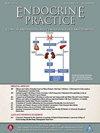Expanding Access to Continuous Glucose Monitoring in Medicare Patients Receiving Specialty Diabetes Care: A Quality Improvement Project
IF 3.7
3区 医学
Q2 ENDOCRINOLOGY & METABOLISM
引用次数: 0
Abstract
Objective
Despite recent revisions of Medicare coverage guidelines for continuous glucose monitoring (CGM) in 2023, the policy change has been slow to disseminate to providers and patients. This quality improvement project aimed to increase CGM prescriptions and utilization amongst qualifying Medicare patients with diabetes on insulin.
Methods
An interprofessional study team used process mapping to define the baseline state of CGM ordering and opportunities for improvement at a single diabetes specialty clinic. Several interventions were trialed through Plan-Do-Study-Act (PDSA) cycles, including general and targeted provider education, provider-facing technology support documents, a formulary guide, and patient-facing education about the new coverage requirements. The primary outcome was percentage of eligible patients using CGM. Process measures included the number of CGM orders started monthly. Demographic and socioeconomic factors in patients using and not using CGM were measured to assess for differences in prescribing practices.
Results
Over 8 months of intervention, the percentage of eligible Medicare patients using CGM increased from 49.6% to 62.6%. The median number of CGM orders started monthly increased from 34 to 60. Both pre- and postintervention, compared to patients not using CGM, patients using CGM were younger, had lower A1c, and were more often enrolled in the electronic health record patient portal. There were no differences in other demographic factors between the groups.
Conclusion
Quality improvement interventions targeting providers and patients can help translate policy changes into clinical practice. Creating interventions with all patients in mind can prevent new differences in care as innovations are adopted.
在接受特殊糖尿病护理的医疗保险患者中扩大持续血糖监测:一个质量改进项目。
目的:尽管最近在2023年对持续血糖监测(CGM)的医疗保险覆盖指南进行了修订,但政策变化在向提供者和患者传播方面进展缓慢。这个质量改善项目旨在增加CGM处方和在符合医疗保险的糖尿病患者中使用胰岛素。方法:一个跨专业的研究小组使用流程映射来定义单个糖尿病专科诊所CGM订购的基线状态和改进机会。通过计划-实施-研究-行动(PDSA)循环试验了几种干预措施,包括一般和有针对性的提供者教育、面向提供者的技术支持文件、处方指南和面向患者的关于新覆盖要求的教育。主要结局是使用CGM的合格患者的百分比。流程指标包括每月启动的CGM订单数量。测量了使用和不使用CGM的患者的人口统计学和社会经济因素,以评估处方实践的差异。结果:经过8个月的干预,符合条件的医保患者使用CGM的比例从49.6%上升到62.6%。每月启动的CGM订单中位数从34个增加到60个。干预前和干预后,与未使用CGM的患者相比,使用CGM的患者更年轻,糖化血红蛋白更低,并且更经常登记在电子健康记录患者门户网站上。两组之间的其他人口统计学因素没有差异。结论:针对医疗服务提供者和患者的质量改进干预措施有助于将政策变化转化为临床实践。在制定干预措施时考虑到所有患者,可以防止在采用创新时出现新的护理差异。
本文章由计算机程序翻译,如有差异,请以英文原文为准。
求助全文
约1分钟内获得全文
求助全文
来源期刊

Endocrine Practice
ENDOCRINOLOGY & METABOLISM-
CiteScore
7.60
自引率
2.40%
发文量
546
审稿时长
41 days
期刊介绍:
Endocrine Practice (ISSN: 1530-891X), a peer-reviewed journal published twelve times a year, is the official journal of the American Association of Clinical Endocrinologists (AACE). The primary mission of Endocrine Practice is to enhance the health care of patients with endocrine diseases through continuing education of practicing endocrinologists.
 求助内容:
求助内容: 应助结果提醒方式:
应助结果提醒方式:


